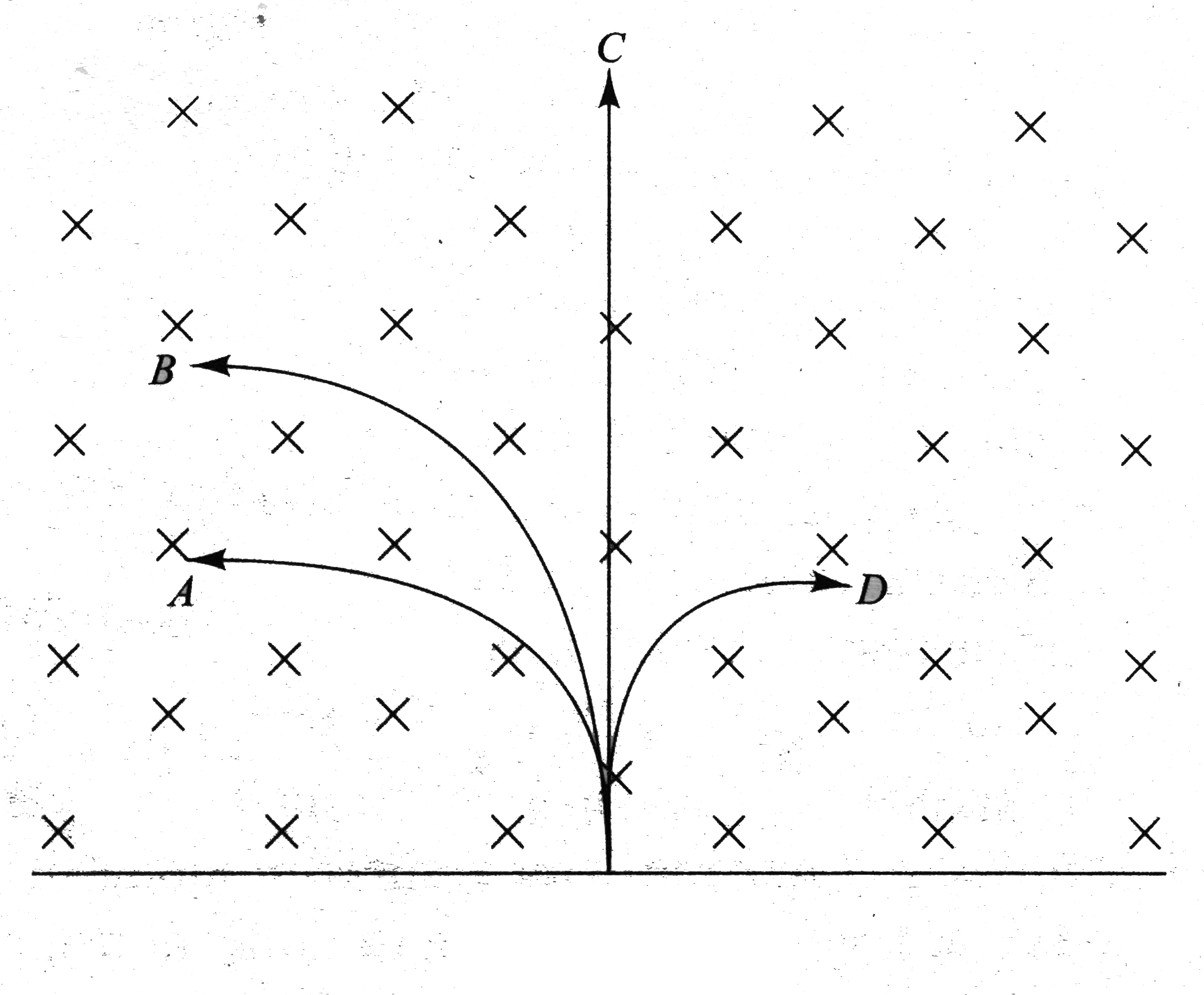An α− particle enters a magnetic field of 1 T with a velocity 106 m/s in a direction perpendicular to the field. The force on α-particle is :
1.6×10−3N
3.2×10−13N
4.8×10−13N
7.6×10−12N
The correct Answer is:B
To find the force on an alpha particle entering a magnetic field, we can use the formula for the magnetic force acting on a charged particle:
F=q⋅v⋅B⋅sin(θ)
Where:
- F is the magnetic force,
- q is the charge of the particle,
- v is the velocity of the particle,
- B is the magnetic field strength, and
- θ is the angle between the velocity and the magnetic field.
1. Identify the Given Values:
- Magnetic field, B=1T
- Velocity, v=106m/s
- Since the alpha particle enters the magnetic field perpendicularly, θ=90∘.
2. Calculate sin(θ):
- Since θ=90∘, we have:
sin(90∘)=1
3. Determine the Charge of the Alpha Particle:
- An alpha particle consists of 2 protons and 2 neutrons, thus it has a charge of:
q=2⋅e
- Where e (the charge of a proton) is approximately 1.6×10−19C.
- Therefore:
q=2⋅(1.6×10−19)=3.2×10−19C
4. Substitute the Values into the Force Equation:
F=q⋅v⋅B⋅sin(90∘)
F=(3.2×10−19C)⋅(106m/s)⋅(1T)
5. Calculate the Force:
F=3.2×10−19⋅106=3.2×10−13N
6. Conclusion:
- The force on the alpha particle is:
F=3.2×10−13N
- F is the magnetic force,
- q is the charge of the particle,
- v is the velocity of the particle,
- B is the magnetic field strength, and
- θ is the angle between the velocity and the magnetic field.
- Magnetic field, B=1T
- Velocity, v=106m/s
- Since the alpha particle enters the magnetic field perpendicularly, θ=90∘.
- Since θ=90∘, we have:
sin(90∘)=1
- An alpha particle consists of 2 protons and 2 neutrons, thus it has a charge of:
q=2⋅e
- Where e (the charge of a proton) is approximately 1.6×10−19C.
- Therefore:
q=2⋅(1.6×10−19)=3.2×10−19C
F=q⋅v⋅B⋅sin(90∘)
F=(3.2×10−19C)⋅(106m/s)⋅(1T)
F=3.2×10−19⋅106=3.2×10−13N
- The force on the alpha particle is:
F=3.2×10−13N
Similar Questions
An α particle travels at an angle of 30∘ to a magnetic field 0.8 T with a velocity of 105 m/s. The magnitude of force will be-
View SolutionAn α particel is projected with a velocity of 107 m/s, in a unifform magnetic fiedl on inductin, 1.2×10−6Wb/m2, in a direction perpendicular to the field. If the lateral force acting on the particle is 3.84×10−18N, what is the charge onn the a particle ?
View Solution
Knowledge Check
A charged particle entering a magnetic field from outside in a direction perpendicular to the field
Acan never complete one rotation inside the fieldBmay or may not complete one rotation in the field depending on it angle of entery into the fieldCwill always complete exactly half of a rotation before leaving the fieldDmay allow a helium path depending o its angle of entery into the fieldA proton and an alpha-particle enter a magnetic field in a direction perpendicular to it. If the force acting on the proton is twice that acting on the alpha-particle , the ratio of their velocities is
A4:1B1:4C1:2D2:1An α particles is projected with a velocity of 107 m/s, in a uniform magnetic field of induction, 1.2×10−6Wb/m2, in a direction perpendicular to the field. If the lateral force action on the particle is 3.84×10−18N, what is the change on the a particle ?
A1.6×10−19CB2.4×10−19CC3.2×10−19CD4×10−19C
A neutron, a proton, an electron and an α−particle enter a region of uniform magnetic field with equal velocities. The magnetic field is perpendicular to the paper and directed into it. The tracks of particles are labeled in Fig. 1.132. The neutron follows the track

View SolutionA n electrically charged particle enters into a uniform magnetic induction field in a direction perpendicular to the field with a velocity v then it travels
View SolutionAn α particle and a proton travel with same velocity in a magnetic field perpendicular to the direction of their veloccites find the ratio of the radii of their circular path
View SolutionA beam of protons enters a uniform magnetic field of 0.3T with velocity of 4×105m/s in a direction making an angle of 60∘ with the direction of magnetic field. The path of motion of the particle will be
View SolutionA charged particle enters into a magnetic field with velocity vector making an angle of 30∘ with respect of the direction of magnetic field. The path of the particle is
View Solution